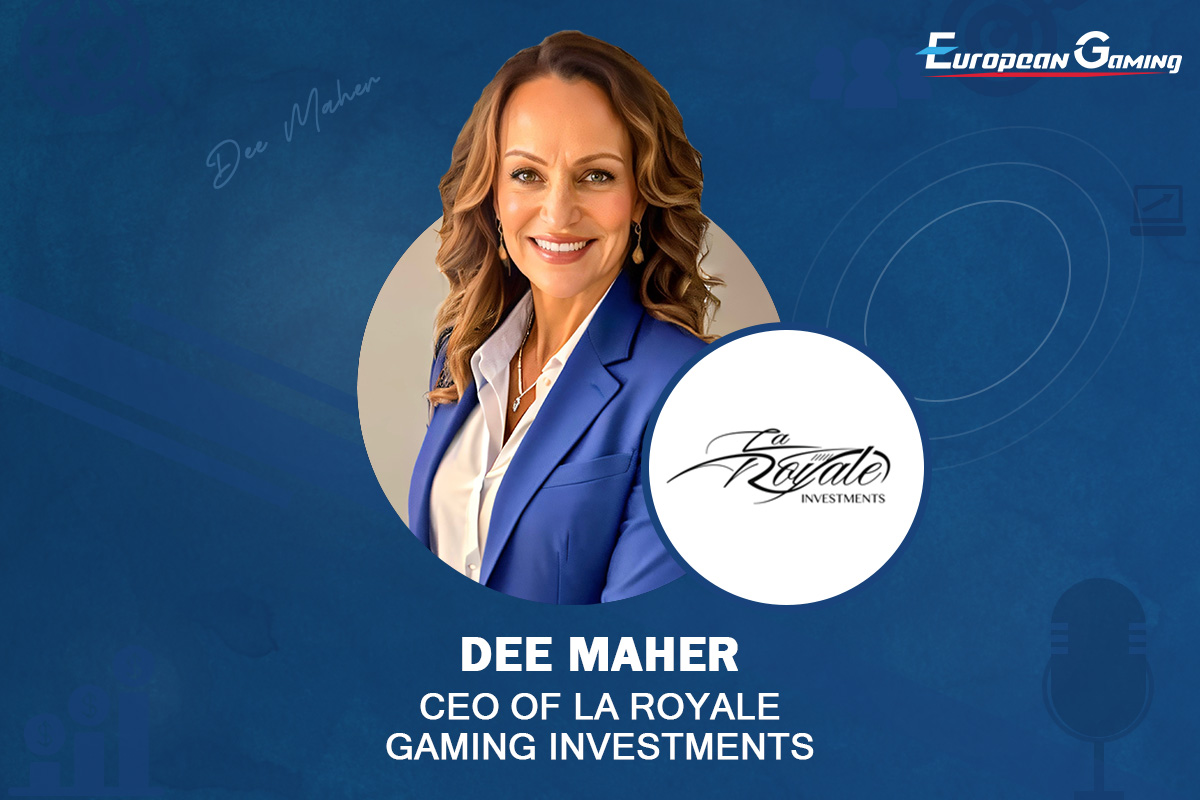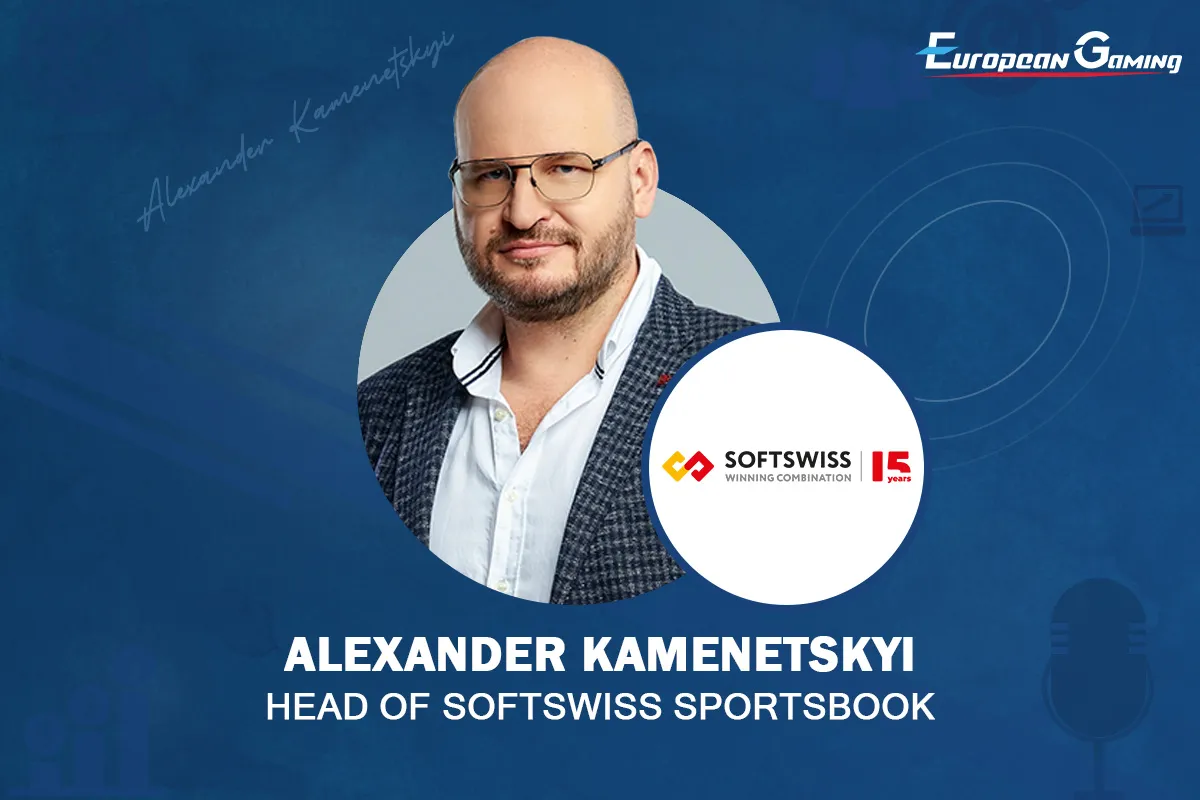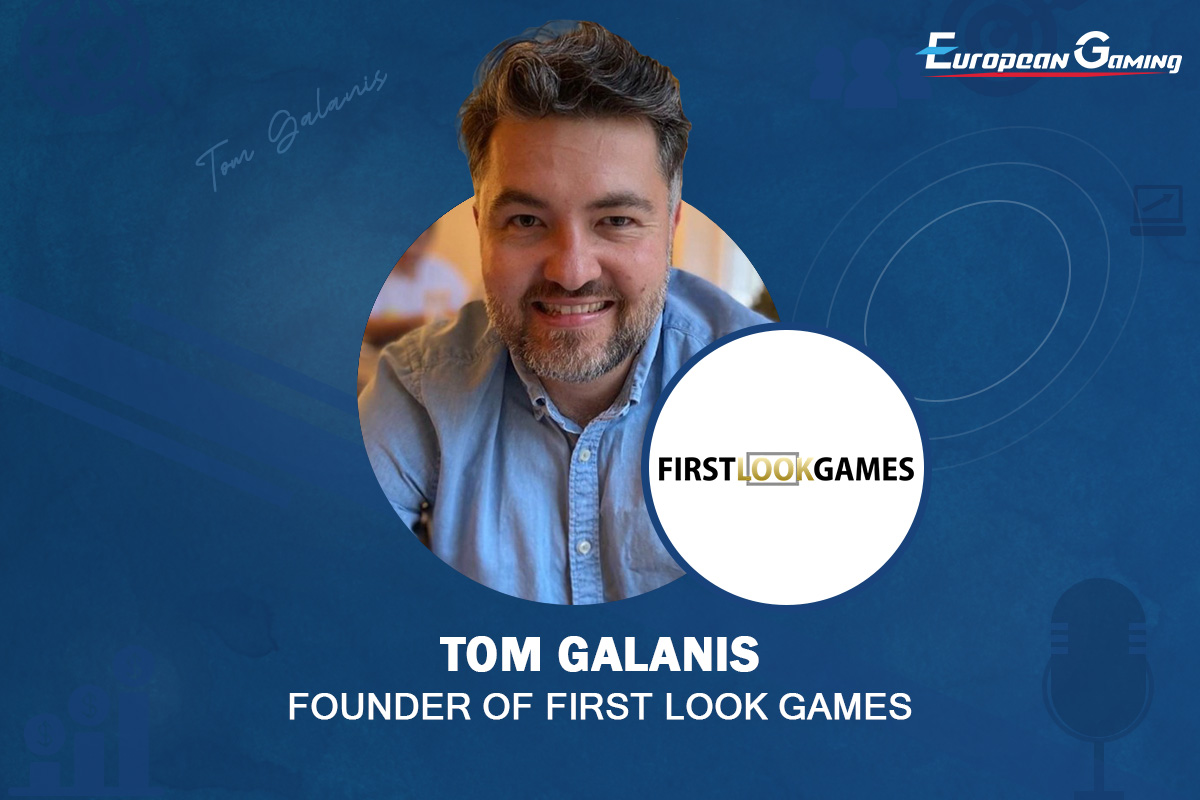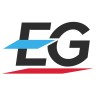Interviews
Q&A: Betting Jobs And Huddle Future Of Recruitment

As we move into a post-pandemic world, European Gaming spoke to Chris Miller Managing Director at Betting Jobs and Mario Zdelican, Co-founder/EVP of Operations at Huddle about the future of recruitment in iGaming and the lessons to be learnt from the last two years.
In-person industry shows like ICE are returning after a hiatus. How important are these for both candidates and recruiters?
CM: Prior to the pandemic I would have said that in-person shows like ICE were essential. They serve as a great time to make introductions to clients who are hiring and candidates who are attending with a goal of employment. We can often be the matchmaker there and then and produce a successful outcome.
Over these last two years both we and our clients have had to adapt without them, of course. In a post-pandemic world, they may not seem as essential as we once felt they were. However, we will be making the most of having everyone in one place at the same time at ICE and other industry shows as it represents an opportunity for Betting Jobs to make things happen instantly.
MZ: Building relationships with talent across other industries, as well as the IT community, locally and globally is of essential importance when recruiting and this was incredibly challenging during pandemic-related lockdowns. There were attempts made in the form of online conferences, but the networking part could never be replicated and struggled to reach pre-pandemic levels.
Going back to in-person shows will help us in further building relationships with candidates. Great talent wants to build relationships with prospective employers and the people who work there, and this is much easier to achieve now that we are able to travel again. It is much easier to explain and demonstrate the Huddle vision and culture, as well as our projects, by actually showcasing it in-person to potential new employees.
Will the hybrid model of working persist in a post-pandemic world and what challenges does it raise?
MZ: We are sure hybrid work is here to stay. Over the course of the pandemic, we have witnessed enormous change within the working world – organisations that were once resistant to employees working from home have undergone a dramatic shift towards being open to work from home and hybrid models.
Since there was no playbook for those scenarios, organisations all over the globe had to try out various ways of dealing with distributed work. We are already seeing new organisational designs around hybrid workplaces, with a multitude of adjustments being made by companies looking to create a model that works for them. In the coming years, we are surely going to experience more and more challenges, but improvements as well. A long time ago we said goodbye to traditional working models, with employee well-being and work-life balance now the focus of the change. We are excited to see what the future brings. Based on what we have learned so far, we will have no problems in adapting to whatever comes our way.
CM: For me there is no doubt that the hybrid model of working will persist. I do expect some pushback from companies who traditionally require candidates to relocate to jurisdictions like Malta, Gibraltar, and Bulgaria to carry out their work. However, candidates are currently more attracted to companies that offer either fully remote working or a hybrid model of employment. There is never enough available iGaming talent to satisfy the entire marketplace at once. Therefore, the companies that are winning on the recruitment front are those who are agile in their approach to hiring and who are willing to embrace current market trends.
In terms of challenges, the building and maintaining a company culture is one of the most topical. Some iGaming businesses have taken to these changes well by being receptive to remote working from the earliest days of the pandemic, or having remote working already established within their business model. Working from home and nurturing their company’s culture simultaneously has become natural to them and their business practices.
Those who have struggled to adapt to this are eager to return to traditional employment. These businesses will find it may take longer to fill positions at large, as candidates have more choice and flexibility available to them currently. The way the working world has changed in the last two years will prove to be an ongoing challenge for those who are eager to return to the Monday to Friday 9-5 model.
What opportunities have been created for businesses being able to hire prospective employees who can work anywhere in the world?
CM: Accessing skillsets and talented employees who would have been out of reach to businesses previously for geographical reasons has created many opportunities. When it is determined that an employee must be based in a set location, the decision for who to hire is based on who is available within a reasonable radius, or who will be willing to relocate. This means that a company may hire the best person they have interviewed, as opposed to hiring who is the best person for the job.
This issue is eliminated for those open to global talent, however, there are sensible factors to consider such as the differences in time zone between employee and employer. However, the world is your oyster, as they say, and this rings true in the present day when it comes to recruitment.
MZ: Remote work helps us to reach the top talents around the globe, and it greatly facilitates the growth and development of both the business and the product. The iGaming industry has so much to offer, as do the start-ups that operate within it. Start-ups like Huddle are becoming more and more of an attractive prospect on the recruitment scene, and now we have the ability to work with talents from anywhere in the world. It feels as if we are just starting to show the potential of opportunities for the top candidate profiles.
Does this allow for the hiring of experienced staff in burgeoning markets such as the US and Latin America?
MZ: The iGaming industry has never been as much in demand for talent as it is now – it is suffering from a lack of industry expertise. This is mostly due to the US and LatAm markets opening up, as well as other, smaller, markets. Demand for talent, new products and services is at its peak. Therefore, we are trying to think outside of the box. As easy as it is to hire people within the industry, there are candidates in many tech companies across various industries that are a perfect fit that have already solved some of the problems we as an industry are facing. Bringing that knowledge under our roof as an industry is a huge plus.
CM: In some cases, yes, although we are finding that many of our US clients maintain office working policies. If that’s the case, this is of course what we work towards, although we do make the realities of the present-day candidate-led recruitment market clear. To a large degree it depends on the role that is available. For example, if it is for a commercial person who is required to meet clients, it is less important for them to be office-based than, say, the person who manages or has oversight of the office.
For the burgeoning market of Latin America, country managers and their teams are a good example, as many will naturally be based remotely. Businesses don’t want to establish many companies across the continent and pay for office rental. It’s commonplace for people in such positions to work remotely and hire teams within their country. However, this is not a new thing as it has been the case since the early days of the sector and remains that way now.
Interviews
Changing the game for content aggregation

We sit down with Dee Maher, CEO of La Royale Gaming Investments, to learn more about her recent appointment as CEO and how the company is set to challenge the gaming industry’s conventions.
La Royale Gaming Investments has bold plans to become a true power player and redefine industry standards. Through acquisitions and mergers, it intends to build an “ecosystem” of online and offline companies, covering both B2B and B2C. Its first play is Quanta, a unique content aggregation platform designed to leverage a high volume with a focus on delivering unparalleled value at a fair price, aiming to introduce innovative solutions for both operators and suppliers. To learn more about La Royale and its goals for the coming 12 months, we spoke with recently appointed CEO, Dee Maher.
Tell us more about your journey to being appointed as CEO of La Royale Gaming Investments.
I’ve been working in the global online gambling industry for many years now in roles covering legal and compliance leadership. Over the past 15 years, I have had the privilege to work for some of the biggest organisations in the business including the likes of Genesis Global, Betclic, Vera&John and Evolution Gaming. When I was approached about joining La Royale Gaming Investments as CEO, it was an offer that I couldn’t turn down. Recognising the company’s ambition to forge a transformative path in the gaming sector, I was compelled by the vision to lead change and drive innovation. My decision to accept was driven by a profound commitment to spearhead our mission, leveraging the remarkable talents of our team to redefine industry standards and make a lasting impact.
What are your main responsibilities and where are you looking to progress most?
I have been tasked with supervising the expansion of our investment portfolio by recognising opportunities that are aligned with our online and offline strategies. I am also overseeing the day-to-day running of Quanta, our inaugural venture, which stands out in the crowded marketplace as a game aggregation platform like no other. In terms of where we are looking to make the most progress, we plan to curate a unique ecosystem of innovative offline and online gaming companies through strategic mergers and acquisitions which combined will make La Royale Gaming Investments a real tour-de-force in the sector and one of the top tier companies with interests across both B2B and B2C.
How is La Royale Gaming Investments going to disrupt the industry? Is it taking a different approach?
La Royale Gaming Investments is poised to redefine the gaming industry with a strategy rooted in bold vision and innovation. We have built out the best team to deploy these ambitious plans and achieve our strategic goals. We are well-capitalised and have lined up our first run of acquisitions, starting with Quanta. Our approach focuses on identifying USPs within each business we engage, introducing ground-breaking offerings to the market. With Quanta, that is being the first mass-market game aggregation platform, creating value for both operators and suppliers. This is an industry where many follow the same blueprint, but we know that to pull distance from our competitors, we need to do things a little differently.
I think our biggest point of difference is that we are curating an ecosystem of innovative businesses across all areas of gambling and gaming. This includes both online and offline, and both B2B and B2C. There are not many organisations in the industry that are this broad and diverse so again this is an area where we can really stand out.
You mentioned that Quanta is the first mass-market game aggregation platform. What does it offer operators and suppliers and how is it different to other solutions in the market?
Quanta has been developed so that it can handle the largest possible volume of games from a diverse array of providers and seamlessly integrate with a vast network of operators. Due to this volume, we can offer the best commercial deals to both parties. Our scale, in collaboration with leading studios and casinos, positions us as a frontrunner in content distribution. Furthermore, we are committed to achieving certifications across all significant regulated markets. For operators, this means they can quickly and easily add games to their lobbies and for studios, it means access to the widest distribution network and thanks to our minimum reseller fee structure, we make this access available to all providers from the established titans to the rising stars.
But just to be clear, Quanta transcends the ordinary, offering not just a cost-effective solution but a sophisticated high-performance platform. The platform is state of the art, allowing for seamless integrations for both operators and suppliers while ensuring the highest standards of resilience and performance. The concept is simple – high volume, low cost – but the advanced technology and strategic foresight required to realise this vision set us apart from conventional solutions in the market.
Content provision is highly competitive so what makes you confident that Quanta will be heard above the noise being made by other providers and aggregators?
Our mass market approach is unique and is already helping us to stand out and generate significant interest from both studios and operators. In the current challenging economic landscape, efficiency and cost-effectiveness are paramount for all stakeholders. But our advantageous commission structure is not the only way we are helping here. At present, operators often have many integrations with various aggregators and directly with game providers. This is inefficient and expensive. With Quanta, operators can plug into a single platform and access all the content they need for each market they target allowing them to save significant resources or to deploy these resources elsewhere.
On the subject of the current economic climate. Is now a good time to be building a business based around M&A?
That depends on how you are approaching your M&A activity and whether an organisation is taking on debt. Timing can be crucial here – you just have to look at the likes of 888 to see how a change in the direction of the wind can have a brutal impact on the wider organisation. That said, there are always plenty of opportunities to acquire great businesses, technologies, solutions and so on, and part of my remit as CEO is to spot these and if they align with our wider approach, make a move. I think the 12 months ahead will be incredibly exciting when it comes to M&A, with some truly transformational deals taking place – something that La Royale Gaming Investments intends to be a part of.
Interviews
The Full Spectrum Strategy: How Betting on Both Popular and Lesser-Known Sports Pays Off

In an insightful interview with Alexander Kamenetskyi, Head of SOFTSWISS Sportsbook, we delve into the complex balance between promoting mainstream sports events and exploring niche markets in the betting world. This strategy enhances profitability and ensures a steady engagement across diverse betting markets, crucial for maintaining a dynamic and resilient business model in the competitive world of sports betting.
How should operators balance promoting popular sports events versus niche ones?
The effective strategy in betting is to diversify wagers across a broad range of sports events and markets. This approach helps minimise fluctuations in outcomes, enhancing both the profitability and predictability of your betting business.
Based on this, we recommend that operators promote all sports comprehensively to maintain steady activity and turnover. This ensures that players remain engaged with alternative options, even during periods lacking major events.
It’s crucial not only to focus on popular events like top football matches or major NBA tournaments but also to spotlight less mainstream sports such as water polo, badminton, and Formula 1. For instance, Australian football is notably underappreciated despite offering unique scheduling advantages that can be leveraged during off-peak times to attract bets.
How can you choose sports that have the best chance of attracting your audience?
To effectively capture your audience’s attention, it’s crucial to identify alternative events during periods when popular events like the Champions League are not happening. Our strategy involves actively promoting these alternatives to familiarise players with new tournaments and sports.
We have two dedicated teams: one that selects potential events and advises operators on what to highlight, while the other crafts promotional campaigns to ensure these events resonate with your audience.
The primary factors we consider when selecting events are Total Bets and the number of bets placed on a specific event or tournament. Popularity is our second criterion, which we measure by comparing the turnover to the number of participating players.
For instance, if there are no football championships over a weekend due to Euro qualifying matches, we might suggest promoting NBA evening games or volleyball tournaments to fill the gap left by high-profile football events.
However, it’s also beneficial to occasionally promote sports other than football, even when popular football matches are available. This strategy helps diversify the betting habits of the audience, which is vital for maintaining a stable and engaging product.
How far in advance do you need to start working on a promotional campaign?
We typically share promotional materials with operators two weeks prior to the event. This timeframe usually provides ample opportunity for operators to finalise the text and graphics. If we opt to use bonuses as the main promotional tool, we generate the rules, bonuses, and banners automatically. It’s then up to the operator to create and either self-publish the content or do so with our assistance.
What promotional channels would you recommend focusing on?
Operators have a variety of tools at their disposal, from email and SMS campaigns to managing their own channels on Telegram and other messaging platforms where they can share updates, offer bonuses, and more. Many even offer additional bonuses for subscribers of these communities, which proves effective in building a targeted and loyal audience interested in your project’s bonuses.
Another effective strategy involves placing promotional banners on various sections of the operator’s website, such as the homepage, event pages, and user dashboards. Additionally, collaborating with influencers like streamers can significantly boost traffic.
It’s also crucial not to overlook the power of email newsletters. When crafting content for these, it’s important to consider user behaviour and device preferences. For instance, with over 90% of our current revenue coming from mobile devices, it’s safe to assume most emails will be opened on a smartphone. Thus, optimising for mobile viewing is key. Our tests show that simple, structured, and transparent offers tend to perform best – you only have a few seconds to capture the player’s attention and persuade them to click through.
Do promotions without financial incentives like bonuses still work?
Let’s be clear: bonuses and promotions are fundamental to attracting players, especially those who rely on luck to multiply their capital. Seen as lucky breaks, bonuses allow participation without direct cost. Properly integrated into the marketing strategy, these incentives not only maintain player interest but significantly enhance financial performance.
For example, if an operator earns 15% from express bets, they can afford to redistribute 5% of that as bonuses, slightly reducing their margin to 10%, but potentially increasing user engagement and solving other operational issues.
Furthermore, promotions enable operators to direct betting activity efficiently. While major events naturally draw attention, incorporating bonuses for lesser-known events like the World Curling Championship can broaden a player’s interest and betting activities, introducing them to new sports and betting markets. This strategy not only diversifies the player’s experience but also stabilises the operator’s financials by spreading funds across various sports, thereby reducing the impact of financial peaks and troughs during major events.
Some operators focus primarily on significant events, leading to considerable financial volatility. For example, many faced challenges during the European Football Championship qualification matches when favourites won, negatively impacting financial outcomes. Operators that engage their audience across a spectrum of events tend to experience more stable performance.
Ultimately, using high-profile events to attract new players while promoting a diverse range of smaller events can create a more robust and diversified betting environment. This approach mitigates risks and cultivates a more engaged and knowledgeable betting community.
How likely is it that a person who came to a particular event will continue engaging with you afterwards? What influence can an operator have during this time?
Welcome packages with various bonuses are highly effective in this scenario. The primary goal is to familiarise new players with the range of bonuses and sports offered. Ideally, the entrance bonus program should provide about 20-30% to engage the player effectively.
Besides the welcome package, we can implement trigger-based rules during major events. For instance, a new player might come for the World Cup, and we could offer a promotion like: “Win three World Cup bets and receive a free bet for Wimbledon.”
Once engaged, they might notice a dominant player like Djokovic and place a bet on tennis, triggering another promotion. For example, we could offer a 50% bonus for making an express bet with specific odds on three tennis events. This showcases our diverse bonus system and introduces new sports gradually.
Furthermore, promoting sports tends to be easier than casinos because there are more events and thus more opportunities to engage players through channels like email newsletters, with less risk of being flagged for spam.
We advise our operators to customise bonuses for specific player demographics – like promoting Brazilian tennis players to Brazilian users or Nigerian athletes to Nigerian users. This targeted approach is significantly more effective than generic offers and resonates even with experienced casino players.
However, it’s crucial for operators to view their offerings holistically; they don’t just have a casino or sports section, but a comprehensive project where every part should function seamlessly together, including promotions and the product’s internal functionality.
Interviews
Tom Galanis: giving a First Look at the Top of the Slots

Gone are the days when we would spend a Thursday evening waiting for Top of the Pops to come on our televisions so that we could see who would be performing that week. The music show may no longer be running, but First Look Games has taken inspiration from the long-running staple and added a slot spin, to create Top of the Slots.
To give us more insight, First Look Games Founder Tom Galanis walks us through the ideation process behind Top of the Slots and how this is helping to give an accurate representation of the top-performing slot titles each month.
You launched Top of the Slots by First Look Games a couple of weeks ago. For those that may have missed the launch, what does this involve?
Tom Galanis: Top of the Slots is a showcase for the top 10 games launched by game studios via the First Look Games platform over the previous 90 days. It’s a never-before-seen take on game popularity and one our game studio partners, and affiliate users are already loving!
What was the thought process behind launching Top of the Slots?
Tom Galanis: First Look Games captures unique data for our game studio partners and Top of the Slots is designed to illustrate the most successful games, benchmarked by this unique data insight, to the industry.
What do game providers have to do to make it into the top ten releases for the month? What metrics do you use to evaluate success?
Tom Galanis: In order to make it in to the top 10, game studios need to release titles via our platform that successfully resonate with the 850+ affiliates that utilise First Look Games, making full use of the suite of tools we offer on and outside of the platform to engage affiliate marketers in the promotion of their game. The rankings are based on the First Look Games Index for all games launched to the market in the preceding 90 days, which combines:
- a) Downloads – which is the aggregated total of download sessions amongst affiliates on the platform. Affiliates download assets including logos, game sheets, video files, screenshots, banners and game artwork;
- b) Hits – this is the aggregated total number of game reviews for the game, created by affiliates using the First Look Games platform;
- c) Reach – this is the aggregated unique visitor count of the websites containing the Hits;
- d) Demo Game Sessions – this is the number of free to play demo game sessions that have taken place from iFrames placed on Hits.
- e) Sentiment Score – this is the average sentiment score from Hits
The games that rank well in this index are obviously commercially successful in their own right but are also being reviewed by affiliates because of the engagement of the game studio with the First Look Games platform, and consequently, with affiliates.
Our most active game studios are not just releasing great games with frequency but are also ensuring their game and studio news is distributed across the First Look Games platform and social channels and that a full and diverse range of marketing assets and game information is being provided through the platform prior to a game’s release. This best equips affiliates to understand the features of a game so that they can successfully convey this to their player audience, which, collectively amongst FLG affiliates, is very significant, totalling more than 20 million slots players worldwide.
Tell us a bit more about the First Look Games sentiment analysis – how is this helping to remove the biases from the ranking process? What data do you use to inform this analysis?
Tom Galanis: Once our technology has identified a new game review, First Look Games uses Natural Language Processing to ‘read’ the review and assess what the affiliate makes of the game. We share a short snapshot of this with the game studio and assign a score to the review based on how positive the affiliate has been in their review of the game. The more positive the language used in the review, the higher the score.
Sentiment scores are then aggregated across all reviews of the game to give a score for the game, and across all games to give the studio a score to benchmark against peers. Using AI, we are able to objectify the subjective to provide true 360 analysis on how affiliates are promoting a game.
What can we expect to see from First Look Games for the remainder of this year?
Tom Galanis: We have a perpetual roadmap of both new studio launches and technical advancements of the platform for affiliates and game studios to look forward to!
-

 Baltics7 days ago
Baltics7 days agoEvoplay bolsters presence in Lithuania with Betsafe deal
-

 Interviews7 days ago
Interviews7 days agoThe Full Spectrum Strategy: How Betting on Both Popular and Lesser-Known Sports Pays Off
-

 Compliance Updates7 days ago
Compliance Updates7 days agoEGBA Welcomes European Parliament’s Approval Of New EU Anti-Money Laundering Framework
-

 Conferences in Europe7 days ago
Conferences in Europe7 days agoCasinoBeats Summit 2024: Providing the Tools to Balance Innovation and Regulation in the Digital Age
-

 Balkans7 days ago
Balkans7 days agoExpanse Studios Launches in Bulgaria with Inbet
-

 Latest News7 days ago
Latest News7 days agoAristocrat Leisure Completes Acquisition of Neo Group Ltd. (f/k/a NeoGames) for $29.50 per Share
-

 Latest News7 days ago
Latest News7 days agoWeek 17/2024 slot games releases
-

 Latest News6 days ago
Latest News6 days agoBOS agrees with KV’s/KO’s advertising assessment of “Trisskrapet” in TV4
















































